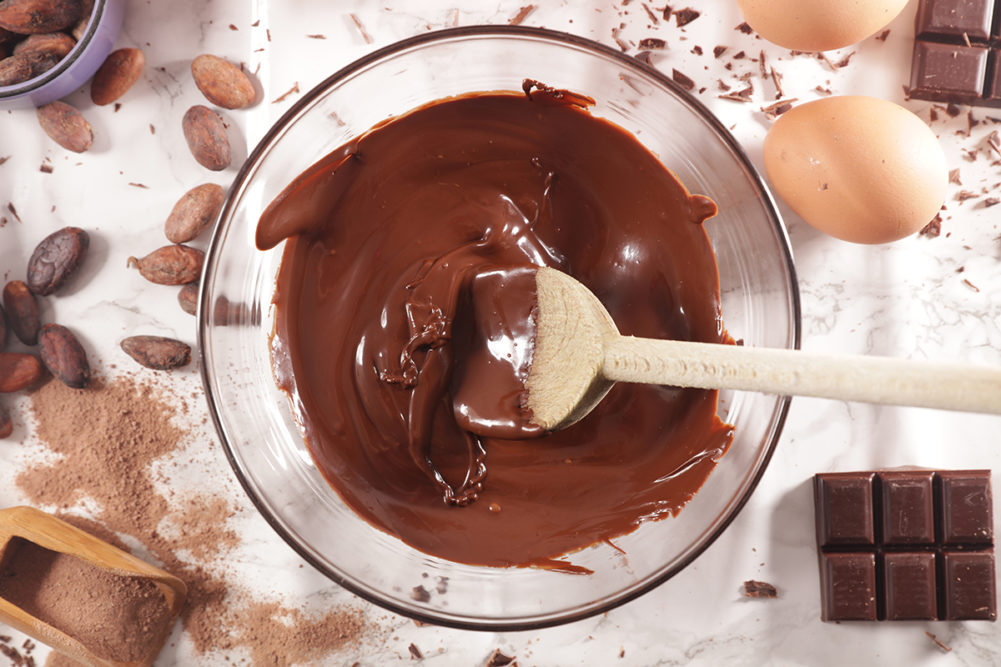Bakers have several factors to consider when reformulating baked goods to remove or reduce eggs, and they have a long list of ingredients that are available to replace functionality.
“We take a holistic approach to reformulations, leaning on our wide-ranging ingredient pantry and systems,” said Jeff Hodges, manager, bakery, snacks and confections applications, ADM. “We replace the critical functional attributes of eggs with our quality soy and pea proteins, we rebalance the flavor and color with key flavor technologies and color solutions, and we rebuild other functionality with wholesome ingredients, such as our chickpea flour and chia meal.”
He explained that each of these ingredients brings several key attributes to baked products.
“Our high-gel protein isolates and concentrates can deliver on binding, aeration and whipping that are typically provided by eggs,” Hodges added. “Plus, our soy and pea proteins are light in color and neutral in flavor, bringing consumer-preferred taste, texture and appearance to any cake. Complementary solutions like tapioca starch can also be used alongside plant proteins and wholesome ingredients. Tapioca starch delivers the important emulsification properties eggs generally provide, helping blend and bind ingredients and improve a cake’s texture.”
Ken Skrzypiec, vice president, Eastern sales, Brolite, said there is no one-size-fits-all approach, and the main challenges are keeping the same volume, flavor, texture and eating qualities. Bakers must consider how the eggs are used in their product.
“Do they use egg whites, whole eggs or egg yolks?” he asked. “They also need to evaluate why they are replacing eggs. Is it to remove an allergen? For cost savings? For ease of production? Do you need a clean label? Are there ingredients you need to avoid? Do you have a target percentage you’d like to replace?”
Laurie Scanlin, principal scientist at Ardent Mills, suggested using a scientific process when reformulating to remove eggs.
“A good approach is to test at various replacement levels such as 25%, 33% and 50% along with evaluations and cost comparisons,” she said. “It is also beneficial to test optimal methods of incorporating the egg replacer such as adding to dry ingredients or hydrating and using it along with liquid eggs or other liquid ingredients.”
There are several questions bakers should ask before trying an egg replacement solution, said Yanling Yin, director, bakery applications, Corbion, including, “Does egg replacement or reduction affect the eating qualities and other sensory attributes of the finished product? Are there any changes to water absorption, specific gravity, process tolerance, and finished product volume, color, appearance and crumb structure? Are there any changes to the final yield in a bakery? What is the cost impact after the change?”
There are many different types of emulsifiers, hydrocolloids, cellulosics and food proteins available to replace eggs, explained Becky Regan, principal application scientist, sweet goods bakery applications, IFF, and their properties and functionality can vary.
“Suppliers can help the baker identify which additives will work best in their specific product,” she said. “For example, the bakery team at IFF is comprised of experts with extensive experience in all types of baked products, as well as in IFF’s core ingredients, which include hydrocolloids, emulsifiers, enzymes, flavors and colors. Our experts will not only suggest which ingredients or ingredient systems may provide the desired functionality in the specific type of baked product but can also help the baker make adjustments based on the results of baking trials. Good communication between the supplier and baker is the key.”
She added that the flavor and richness of eggs can be replaced with natural and artificial flavorings as well as fats, such as butter, oil or shortening, and a variety of dairy products like buttermilk, sour cream and yogurt.
Sheila McWilliams, technical sales manager, Fiberstar Inc., also mentioned the many reasons fats are important in cakes and how mixing them in correctly can serve as an emulsifier in the absence of eggs.
“A cake needs a fat component to provide texture and improve quality in freshly baked products and throughout shelf life,” she said. “Blending a formula containing a water and fat component requires an emulsifier. Eggs help with emulsification, so if they are removed from a formulation, it is necessary to add back an ingredient to support blending the oil and water phases.”
Replacing the long list of attributes eggs bring to cakes takes a careful approach to find the best mix of the right ingredients to ensure that cakes are providing everything consumers want, including taste, texture, moisture content and more.

